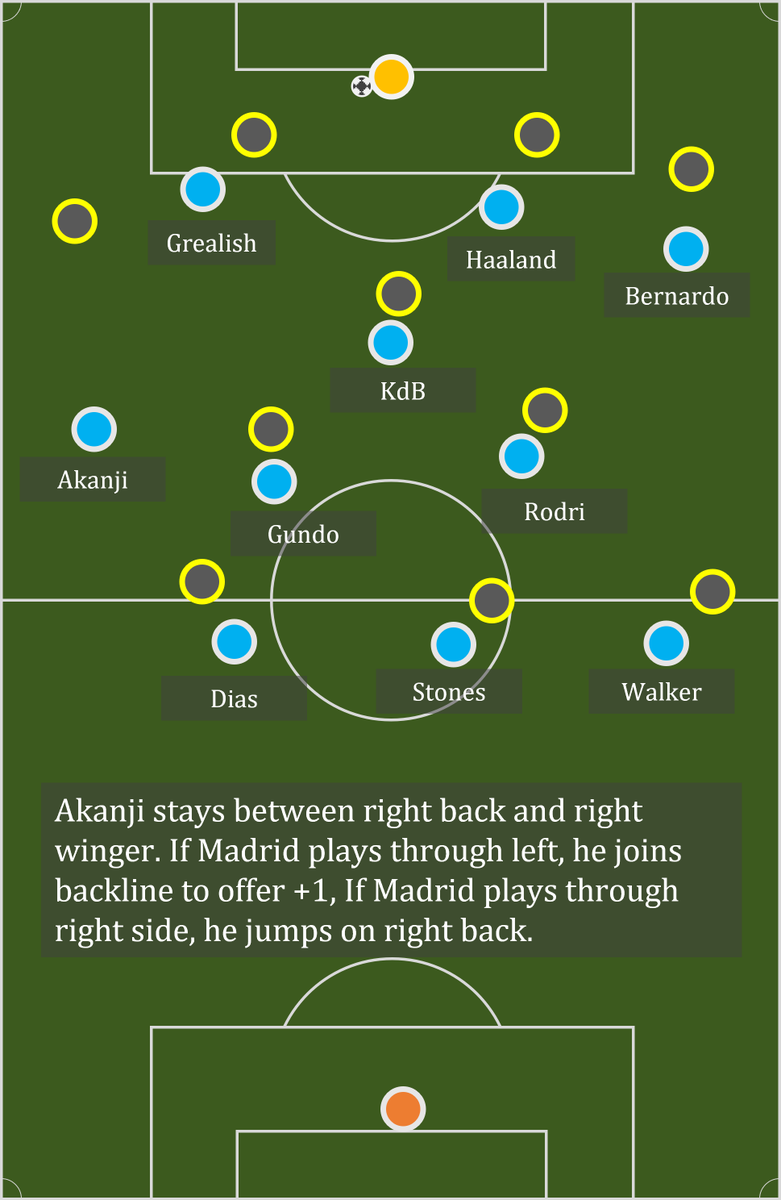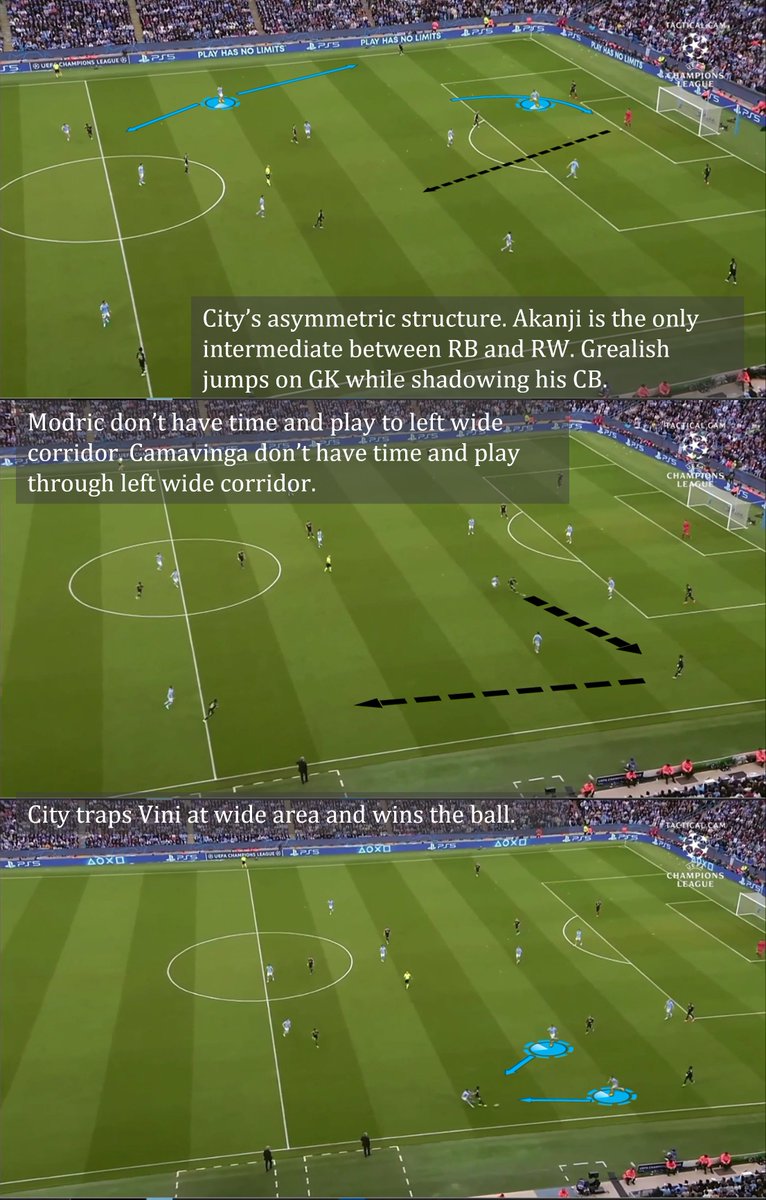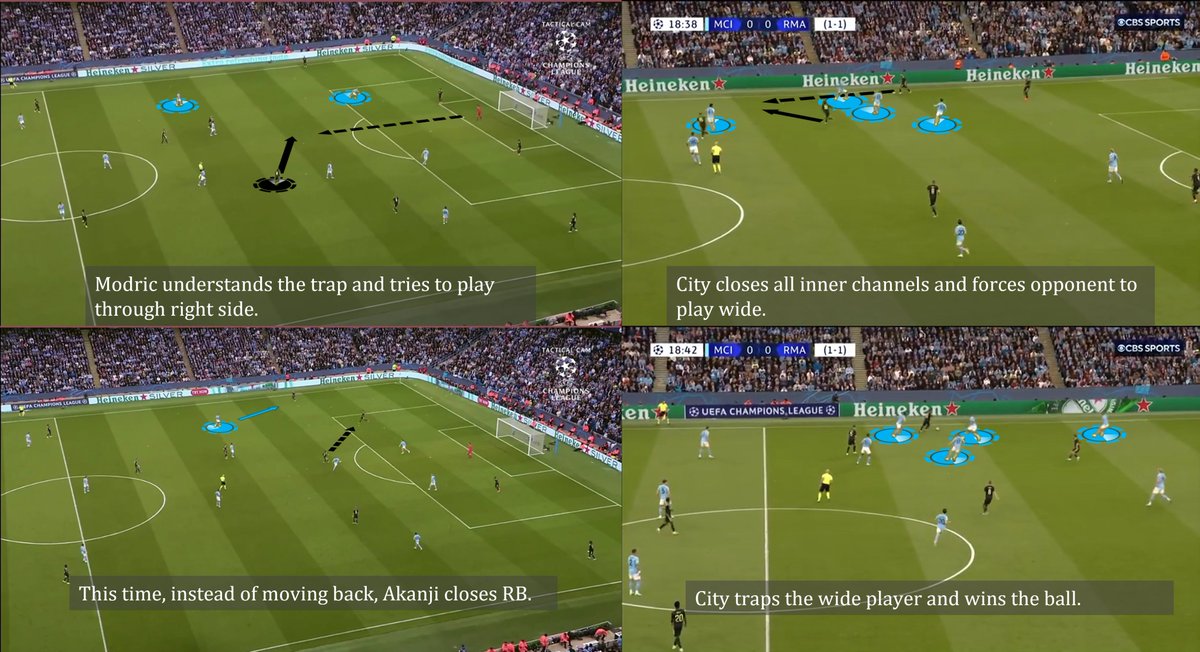City might have used the same structure in possession and the exact same lineup of 1st leg, but with totally different intention; destroying their opponent.
All of us had talked about how cautious Pep was in the 1stleg. We had all looked for that extra man coming from behind… twitter.com/i/web/status/1…
All of us had talked about how cautious Pep was in the 1stleg. We had all looked for that extra man coming from behind… twitter.com/i/web/status/1…

Position is a communicative element in football, and City players are masters of this language. In that sense, De Bruyne is the reference for all teammates. His movement tells his teammates what they want to do in attacking third, while his dynamism (lateral mobility) makes the… twitter.com/i/web/status/1… 



Switch plays to use +1s or advantageous 1v1s at far field, one of Pep’s trademark plays, were again extremely useful yesterday. 



The first goal was the perfect combination of all these principles. It was beautiful, it was Guardiola’s football in a nutshell. 



We also saw an aggressive and smart high press. I have been hearing the term, “the perfect press”, commonly these days. There is no perfect pressing structure to use against every team. You press according to how your opponent builds up, how they attack.
City learned from the first game, saw how Real Madrid overload, progress and attack using left-side channels. Yesterday’s pressing structure was clearly to prevent this. Akanji was between Rodrygo and Carvajal, evaluating the situation to either jump on Carvajal or returning back… twitter.com/i/web/status/1… 

This approach made it very hard for Madrid to overload at left flank and connect Vini, Benzema, and Modric. And when the trio was disconnected, Madrid couldn’t hold possession and progress the ball. Eventually, the 2nd goal came from a turnover with this press forcing Madrid to… twitter.com/i/web/status/1… 





The first half of yesterday’s game could be the best team performance I witnessed in the recent years, one of the top performances in the history of proactive, short-passing, combination football. Everything, from build-up to creation, high-press to transitions, was just perfect… twitter.com/i/web/status/1…
Screenshots were edited with Once Video Analyser PRO - @11OnceSport #OncePRO
• • •
Missing some Tweet in this thread? You can try to
force a refresh








